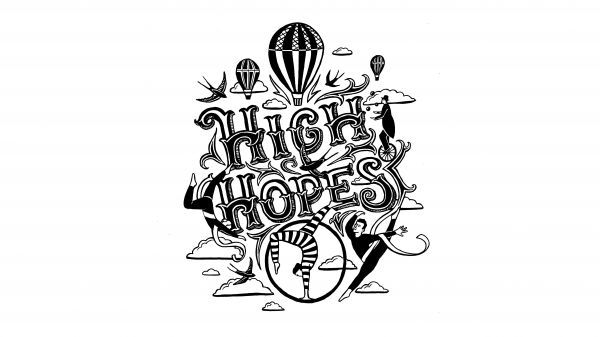
We all have dreams and goals, but what’s stopping you from achieving them? Well, for many people, quite a lot actually. the mortgage. Self-doubt. Low energy. The seeming unavailability of hours in a day. The demands of children, or parents. Lack of skills or experience. Feeling that you’re too old, or too young.
But while these are all genuine, real-world issues, they shouldn’t be the death knell for your creative ambitions. Here, we’ll walk you through some of the most common challenges in pursuing your dreams, suggest ways to overcome them, and hear from creatives who’ve done just that.
Challenge 01: Finding the time
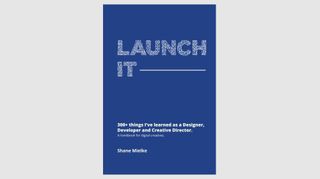
Let’s deal with the most common issue first: finding the time. Whenever you want to achieve something outside your main working hours, the clock always seems to be against you. Between the office, your commute and daily household life, there never seems to be a spare minute.
Are things that bad, though? Shane Mielke, creative director and author of Launch It – a book of career advice for creatives – suggests your time might not be as limited as you think.
“Take an honest look at your day,” he advises. “Find things you might be wasting time on that are less important than your goal, or that you could be doing more efficiently. Things like social media, video games, commuting and inefficient work habits can all suck bits of time from our lives. If you can free up 30 minutes every day, that adds up to 180 plus hours in a year. Excuses are just excuses.”
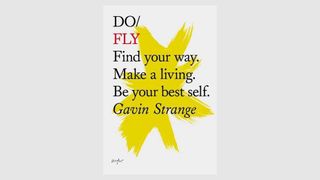
Gavin Strange, who works at Aardman in Bristol by day and pursues multiple fascinating side projects by night, offers an example of how that might look in practice. “For me, I find a routine that I try and stick to during the weekdays,” he explains.
“I finish work at 6pm and then come home, eat dinner with my wife, watch a 30-minute TV episode – anything longer eats into the night too much – and then get cracking on ‘round two’, as I call it. Sometimes, when things get really busy, I get up an hour early before work to squeeze in extra passion projects, or get cracking on my lunch hour.”
Get the Creative Bloq Newsletter
Daily design news, reviews, how-tos and more, as picked by the editors.
That might sound like a tough regime, But Strange – whose self-published book Do Fly serves as a motivational tract for creatives – sees it more as a matter of creating good habits. “It’s about finding the right pattern for you, or adapting how you already work,” he explains. “There’s no right or wrong way to do it. The hardest part is starting, but once you’ve got a tiny bit of momentum, it gets better and better.”
Challenge 02: Finding the energy
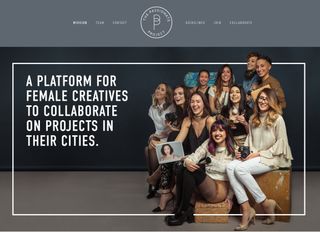
But what if you do manage to eke out some extra hours, only to find you don’t have sufficient energy to use them productively?
“I think the amount of energy you have – or you think you have – relates to the amount of passion you have invested in your goals,” says Ariana DeLuca, a New York-based art director.
“This is why I called my side project The Passionate Project, because making it was like falling in love. I was so excited, I had great energy, I had butterflies. I was getting home from work and I was staying up till 3am. To get on the computer and create this, and know I was doing something I absolutely loved, gave me that extra shot of energy.”
Carolyn Porter, a graphic designer from Minnesota, tells a similar tale. Her love of old-time handwriting propelled her to create her own font, which mimicked the script of a real-life wartime letter.
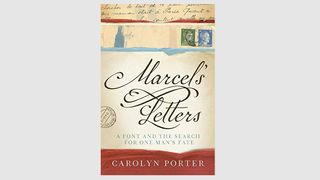
That project subsequently spun into a book, Marcel’s Letters: A Font And The Search for One Man’s Fate, which she based on the research she’d done into the letter’s original author. “I think if you find a project that you’re passionate about, you just have to be relentless and tenacious about bringing that project to life,” says Porter.
“It may not be fast, it’s not going to be easy. But it’s ultimately worth it, and you just need to be tenacious.”
Challenge 03: Life getting in the way
All this can be easier said than done, of course, as life has a habit of getting in the way. A child or family member gets sick. The roof starts leaking. You’re handed a huge project at work and have to work later hours than usual.
The solution? Accept that life is not perfect, sure… but don’t give up, and try to find new ways to hang on to your goals.
"Sometimes life or other projects are more important,” says Mielke. “In life, you have to go where the fires are at. But that doesn’t mean you can’t still play mental Tetris with, say, the logistics of a side project, in those moments of the day that don’t have your complete attention: when you’re working out, in the bathroom, on your commute. The organisation and planning of a project or goal is the foundation and support of the physical action of the idea."
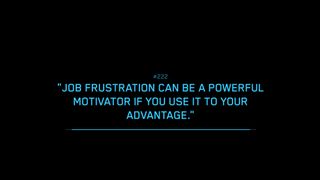
And when things get sticky, Strange stresses one key word: positivity. “Just approaching everything you do with a positive mind state can work wonders,” he enthuses.
“It presents obstacles as opportunities, which helps immensely when it’s 1.30am and you’re not sure if you can succeed. You need all these little boosts to help you through all of your creative endeavours.”
Challenge 04: Finding the money
Sometimes, your dreams don’t just demand your time and energy; they need a bit of seed money too. You might need some cash, for example, to pay for that course, print your own book or magazine, or to get you through the first few months of going freelance.
The most obvious approach is to start watching the pennies and save up a nest egg. That’s not a particularly fun prospect, but make a few lifestyle sacrifices and keep a careful eye on your budget, and it should be achievable. Plus of course, if you’re foregoing that nice bottle of wine or subscription to Sky, it’s only going to help you find that extra time you need to pursue your creative goals.
But what if you’re impatient to get started right now? That shouldn’t be a problem, says Mielke, it’s just a case of which part of your plan you get started on. “Google is free, and so research and planning costs you nothing other than time,” he points out. “So switch gears to a part of your plan that might be more organisational and can be done during free time at night or on weekends.
“For example, if you’re wanting to self-publish a book about your favourite design topic, there’s nothing stopping you from researching how to get your book on Amazon, or making a list of possible printers who might print your physical book.”
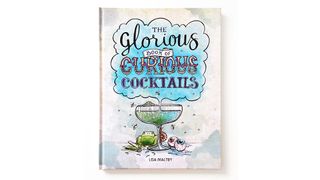
Of course, saving is not the only solution to money issues. Alternatively, you could visit the bank and see whether they can offer you a loan, or equity release on your home. If they say no, try another bank or building society. We’re still in an era of quantitative easing, and you might be surprised how willing financial institutions are to lend to anybody with a track record of having a regular income and good credit score.
Another source of potential cash might be crowdfunding. Lisa Maltby, a Sheffield-based illustrator, used Kickstarter to finance her ‘disgustingly distinguished recipe book’ for children, The Glorious Book of Curious Cocktails. (She's also the illustrator behind this article's opening image, High Hopes.)
She managed to raise £5,600, although creatives commonly ask for, and often get, larger sums. Be warned, though: even free money doesn’t come for free, and you’ll probably have to do a lot of hustling in order to meet your target.
Running a Kickstarter was like having another child; it was quite a challenge.
Lisa Maltby
“Running a Kickstarter was like having another child; it was quite a challenge,” recalls Maltby. “I have a wide network of people I’m connected with, so I was able to push for a few things, pull a few strings."
"But even then it was really tricky to get articles about the campaign published, to get people to share it on social media. You are your own campaign, so you’ve got to fully drive it all the time. I got the funding, which is amazing, but this sort of campaign is not to be taken lightly. It’s really hard work.”
Challenge 05: Building a strong network
Even if you consider yourself a self-starter, the success of your creative dream often lies in the hands of other people. So having a strong network of contacts will help enormously, whether you’re seeking work as a new freelancer, looking for the right partner for a collaboration, or searching for a mentor as you develop your skills in a new creative field.
Building up a decent list of contacts you can rely on doesn’t just happen by accident, though. Getting out there and introducing yourself to people, both on social media and in the real world, at things like creative events and meetups, is essential.
Kate Moorhouse, a graphic designer from Manchester, very quickly learned the importance of networking when she went freelance. “I heard about a meetup group based in Sheffield and Manchester called Freelance Folk and popped down to see what it was all about,” she explains.
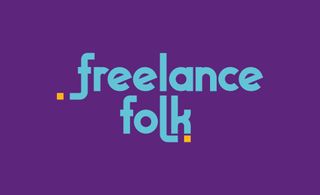
“I immediately got a friendly response from everyone. It felt like we were all in the same boat: finding our way, making the same mistakes. And it was nice to chat to like-minded people from different industries. Everyone had different disciplines, but the freelance side was common to us all.”
It wasn’t just a psychological boost: the group helped her find work, too, she adds. “I met the founder, Katy Carlisle, at one of her Squarespace workshops and she asked me to redesign the logo for the group. In return, she helped me with some Squarespace support. Since then, whenever I go to the group, I meet someone new who I can either work for or work with. I’ve also collaborated with other freelancers from there, and I feel it’s a really natural way for us to work together.”
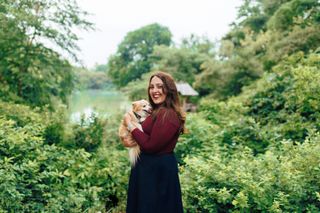
Challenge 06: Finding collaborators
If your creative dream for 2018 involves collaboration, then its success will live and die on whether you choose the right partner. Tennessee illustrator Tammy Coron, who recently teamed up with Apple game developer Chris Language to create game design resource DayOfTheIndie.com, offers some pointers.
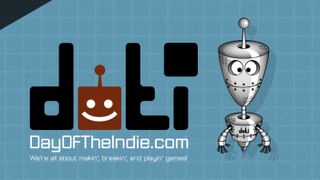
“Finding someone you trust and being honest with each other are vital,” she says. “One of the reasons Chris and I work so well together is because we speak our minds: we’re honest and open with each other.
“We also share responsibilities and understand situations where one of us needs more time to focus on something else, without guilt from the other. And the best thing about our partnership is that we encourage and push each other to reach just past our abilities, in order to level-up our skills.”
Challenge 07: Promoting yourself
Whether it’s launching a passion project or your services as a freelancer, promoting yourself is key. That means not just networking with other creatives, but sharing your work more widely, on platforms such as Instagram, Pinterest, Behance and Dribbble. This may sound obvious, but New York-based designer and lecturer Shanti Sparrow has seen the positive effects first-hand.
“I’ve been a designer for nine years, but my freelancing outside of my main job has actually only kicked off in the last two,” explains Sparrow. “It was only when I started releasing my work onto social media channels that it happened. I was started to get contacted internationally, whereas before it tended to be people I knew through people I knew. But now it’s anybody who Googled a magazine and my thing came up, and they’re in China and want me to make them something.”

There’s a lot of noise online, of course, and just posting stuff doesn’t necessarily mean you’ll get attention, so it pays to get creative. For example, Rotherham-based designer Amy Kilner launched an Instagram feed called @thedesignfix this year, and it’s become a roaring success.
“The way you get followers on Instagram is by getting your work featured on other pages,” she explains. So she essentially took the same idea and reversed it. “I launched my own page to help other creatives, and it just blew up,” she explains. “There are now around 40,000 posts on Instagram using the hashtag and I’ve got more than 18,000 followers on it. I’ve got these brand ambassadors promoting it, and it’s just growing. It’s still a work in progress but I’m doing something right.”
Challenge 08: Accepting it’s not linear
As the saying goes, ‘Man plans, God laughs’. In other words: whatever scheme you have to boost your career and achieve your dreams in 2018 may very well go astray. But that’s not a reason to not bother trying at all, more a realisation that you’re going to have to stay nimble, accept challenges head on and hope to enjoy as much of the ride as possible.
“There’s this assumption that when you’re an adult you get everything locked down and sorted,” says Strange. “No way! I think these times are the most exciting; you’re more wise to the world and can make changes even more easily. It’s about being open and receptive to change, and eager to identify when something isn’t working for you and then making a change. It’s a never-ending process of analysis, assessment and action!”
Related articles:

Thank you for reading 5 articles this month* Join now for unlimited access
Enjoy your first month for just £1 / $1 / €1
*Read 5 free articles per month without a subscription

Join now for unlimited access
Try first month for just £1 / $1 / €1

Tom May is an award-winning journalist and editor specialising in design, photography and technology. Author of the Amazon #1 bestseller Great TED Talks: Creativity, published by Pavilion Books, Tom was previously editor of Professional Photography magazine, associate editor at Creative Bloq, and deputy editor at net magazine. Today, he is a regular contributor to Creative Bloq and its sister sites Digital Camera World, T3.com and Tech Radar. He also writes for Creative Boom and works on content marketing projects.